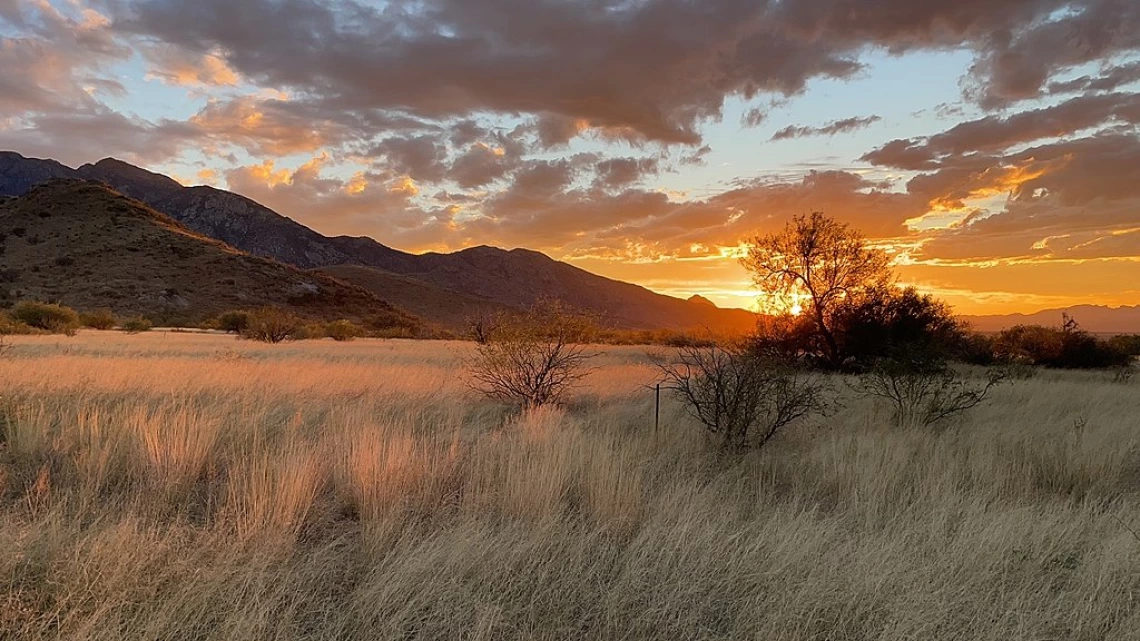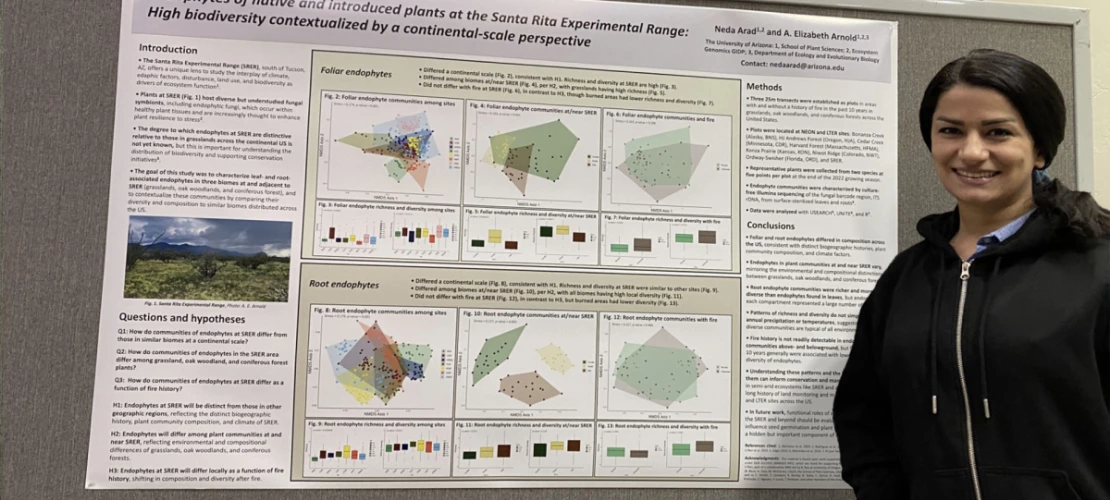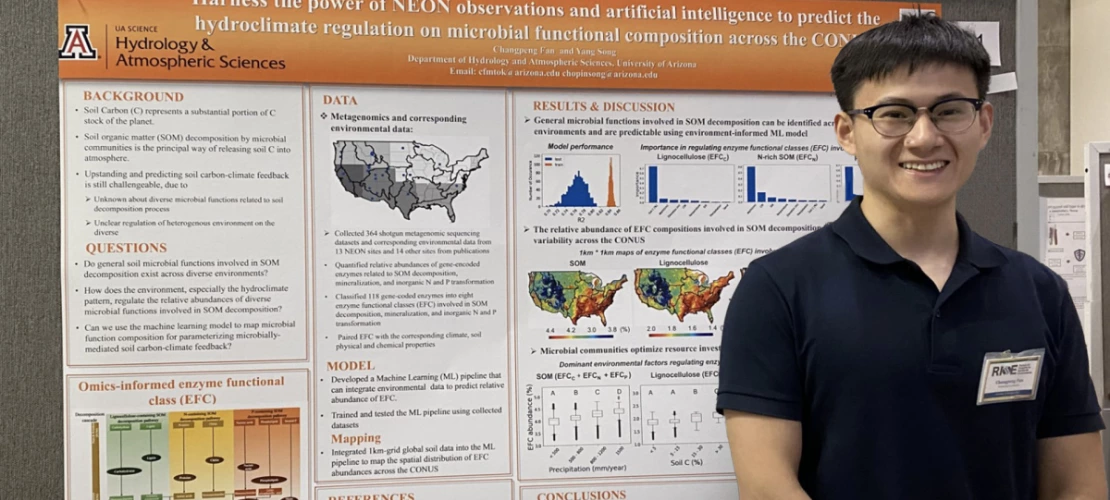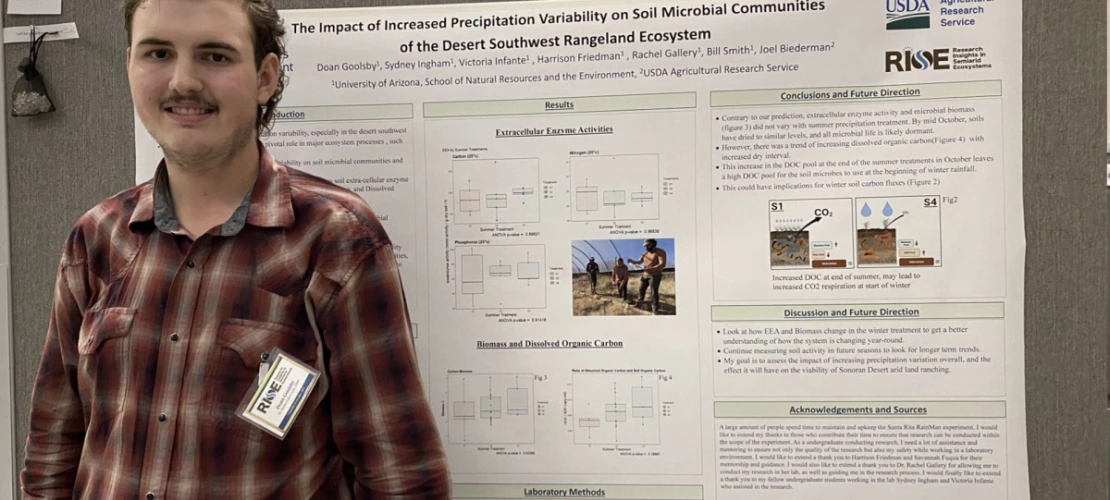19th Annual RISE Symposium celebrates student research
The annual tradition presented opportunities for research, teaching and outreach.

Pasture 1 on the Santa Rita Experimental Range, southeast of Tucson
The 19th Annual Research Insights in Semi-Arid Ecosystems (RISE) Symposium was held this past Saturday at the Marley Building on the UArizona Campus. The objectives of the symposium were to share recent results of scientific research in semiarid environments, with an emphasis on work conducted at the USDA-ARS Walnut Gulch Experimental Watershed (WGEW) and the University of Arizona Santa Rita Experimental Range (SRER), and to encourage collaboration among researchers and students on future research and outreach activities. This year’s symposium presented opportunities for research, teaching and outreach. Speakers at the event covered a wide variety of topics, including results of completed and on-going work at WGEW and SRER.
Oral presentations started with updates and opportunities at the Santa Rita Experimental Range and National Ecological Observatory Network (NEON) by Brett Blum, director of the Southern Arizona Experiment Station, and Abe Karam, NEON manager. Nico Franz, from the School of Life Sciences at Arizona State University, introduced the enormous number of holdings and research opportunities using the NEON Biorepository. Vanessa Prileson, from Pima County Natural Resources, Parks and Recreation, gave an overview of lands held by Pima County in title and easement for the Sonora Desert Conservation Plan, specifically opportunities on the ranch lands in that program. Michael Johnson, an Indigenous Resilience Specialist in the School of Natural Resources and the Environment at the College of Agriculture, Life and Environmental Sciences, and a 250th generation Hopi Farmer, described opportunities related to agricultural food storage and cultivation practices performed by the Hopi and how those practices reduced the vulnerability to the uncertainties of inter-annual growing conditions. Joel Biederman, from the USDA ARS Southwest Watershed Research Center, described discoveries and opportunities following the first three years of the RainMan project that measured vegetation and soil microbial responses to manipulation of rainfall amount and timing on the Santa Rita Experimental Range.
After lunch, Phil Heilman, from the USDA ARS Southwest Watershed Research Center, described recent projects and opportunities at the Walnut Gulch Experimental Watershed near Tombstone. Eric Dhruv, from the Ironwood Tree Experience, described programs connecting diverse youth to biodiverse ecosystems and specifically the programs that occurred on the Santa Rita with local high school students. Betsy Arnold, a professor in the School of Plant Sciences at the College of Agriculture, Life and Environmental Sciences, led us through recent discoveries and ongoing projects describing the abundance and role of soil microorganisms on the above ground vegetation at SRER and nearby locations, as well as a fascinating collection of photographs of common mushroom species.
Additionally, 18 short talks and accompanying posters showcasing work conducted at WGEW and SRER were presented by graduate and undergraduate students and submitted for a poster contest. The posters are available for viewing on the RISE website.
We rely on donations to cover the student poster contest awards and costs associated with running the symposium. Please consider making a donation of any amount to support the Symposium Program by visiting the UA Foundation website.



